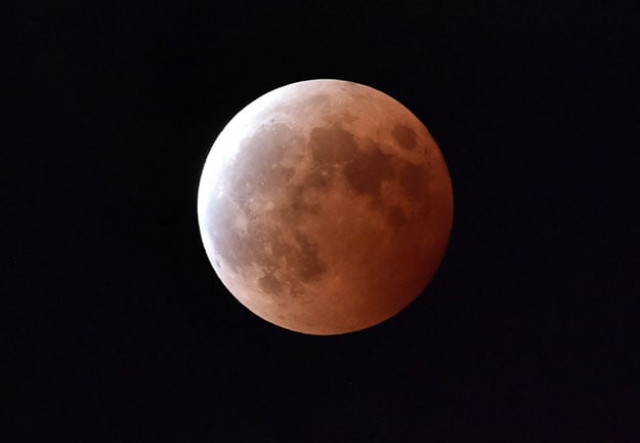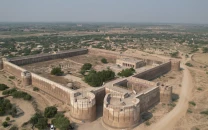Blood moon to dominate night sky in longest lunar eclipse of 21st Century
The total eclipse will last 1 hour, 42 minutes and 57 seconds

Blood moon to dominate night sky. PHOTO: AFP
The total eclipse will last 1 hour, 42 minutes and 57 seconds, though a partial eclipse precedes and follows, meaning the moon will spend a total of 3 hours and 54 minutes in the earth's umbral shadow, according to NASA.
Across the world, from the Taj Mahal to the Eiffel Tower, people will turn their eyes to the sky, hoping to see the blood moon, which appears orange, brown or crimson as sunlight is bent through the earth's atmosphere.
SpaceX delays plans to send tourists around Moon
The fullest eclipse, at 2022 GMT, will be visible from Europe, Russia, Africa, the Middle East, much of Asia and Australia. Hundreds of people in Australia have already paid to watch the eclipse from the Sydney Observatory before sunrise.
"Our event is sold out, we have about a couple of hundred people that are booked in to come and watch it with us," said Andrew Jacob, curator at the Sydney Observatory, located right near the Harbour Bridge.
When the moon moves into the conical shadow of the earth, it goes from being illuminated by the sun to being dark. Some light, though, will still reach it because it is bent by the earth's atmosphere.
"It's called a blood moon because the light from the sun goes through the earth's atmosphere on its way to the moon, and the earth's atmosphere turns it red in the same way that when the sun goes down it goes red," Andrew Fabian, professor of astronomy at the University of Cambridge, told Reuters.
At the same time, Mars will be traveling closer to earth than it has been since 2003, so some observers may be able to see what looks like an orange-red star--and is in fact the red planet.
"It is a very unusual coincidence to have a total lunar eclipse and Mars at opposition on the same night," said Robert Massey, deputy executive director of the Royal Astronomical Society, who will try to watch the eclipse from the Mediterranean Sea.
Scientists shocked as NASA cuts only moon rover under development
For thousands of years, man has looked to the heavens for
omens of doom, victory and joy. Astronomers, though, said there was no cause for worry. "There is no reason to believe that blood moons foretell
doom," said Massey. "This does not herald the apocalypse: seeing
a lunar eclipse and Mars in the sky is something people should
enjoy rather than worry about medieval superstitions." The eclipse of the moon will not be visible from North
America or most of the Pacific. The next lunar eclipse of such a
length is due in 2123.



















COMMENTS
Comments are moderated and generally will be posted if they are on-topic and not abusive.
For more information, please see our Comments FAQ